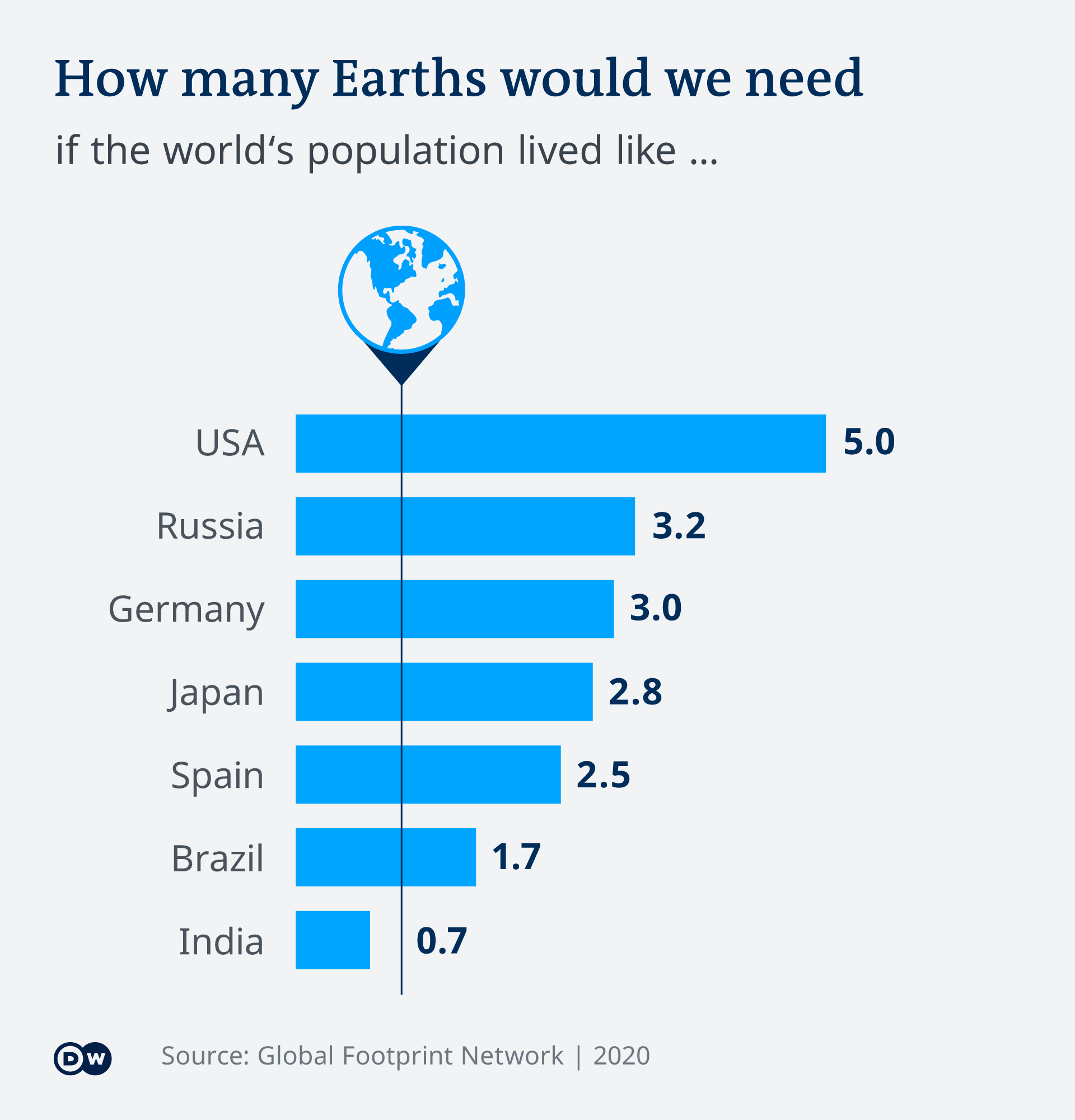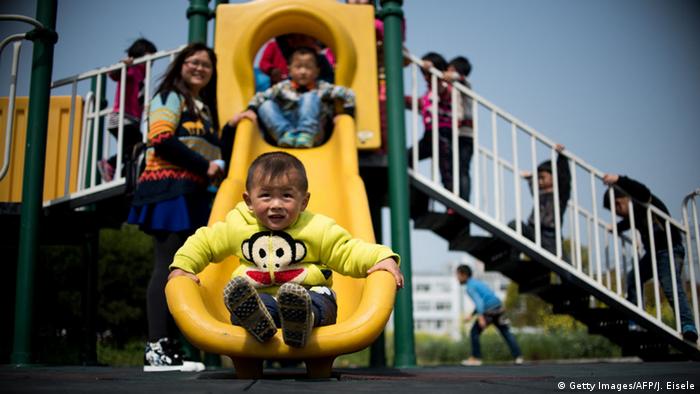Overconsumption, not overpopulation, drives climate change. A projected decline in fertility could see the world's population peak in just four decades, with Japan and Spain halving in size.
Shortly before he shot dead 22 mostly Hispanic people in El Paso, Texas, a little over a year ago, a white supremacist wrote in his online manifesto: "If we can get rid of enough people, then our way of life can be more sustainable." He was inspired by a terrorist in Christchurch, New Zealand, who five months earlier had killed 51 Muslim worshippers in attacks on two mosques and identified as an "eco-fascist."
Neither the fears nor the actions of the two men are grounded in science.
Fertility is falling, people are aging, and by the end of the century humans will be shrinking in number on almost every country on Earth, according to a recent study published in the journal Lancet. Far from an overpopulation crisis, demographers are asking where the next generations of young people will come from.
The study from the Institute for Health Metrics and Evaluation (IHME) projects the number of people on the planet will peak just four decades from now, at 9.7 billion, before falling to 8.8 billion by the end of the century.
In 80 years, countries like Spain and Japan would halve in size. China would shrink by almost as much, leaving India and Nigeria as the world's biggest countries. Only in 12 countries, including Somalia and South Sudan, would there be enough babies to keep populations stable. The rest would be aging.
And if the world meets targets for universal education and contraception — the positive driving force behind falling fertility — there would be 1.5 billion people fewer in 2100 than there are today.
That demographic shift would transform societies. Who would pay for elderly healthcare? Would countries fight over young migrants? When, if at all, would people get to retire?
It also raises a question that has dogged the environmental movement for decades and is being increasingly weaponized by the far-right: Shouldn't fewer people be good news for the planet?
Unequal emissions
Overpopulation is a convenient idea. To some, it means their consumption isn't what's damaging the planet, but rather the sheer mass of people — so there's little point in changing their behavior.
The IHME study says fewer people on the planet would mean lower carbon emissions, less stress on global food systems, and less chance of "transgressing planetary boundaries."
But the problem, scientists say, is that people do not emit equally.
"It's this extremely superficial analysis," said Arvind Ravikumar, assistant professor of energy engineering at Harrisburg University of Science and Technology.
Population growth has increased greenhouse gas emissions, according to theIPCC, the UN panel of climate science experts, but it is dwarfed by the rise in emissions per person, which is tied to income. People in the richest countries emit 50 times more than those in the poorest — and it is in these low-income, low-emitting countries where human numbers are growing fastest.
"Sometimes people try to use population as a way to let rich countries off the hook," said Zeke Hausfather, a climate scientist at the Breakthrough Institute in California, "whereas in reality, it's our consumption and our level of economic activity that drives emissions more than the number of people we have."
A world with lots of people running on clean energy could have lower emissions than one with few people powered by fossil fuels. Big, fast-growing countries like China and India are building cheap solar panels and wind turbines that could bring their total emissions down even as incomes and populations rise.

But developers across Africa and other parts of Asia are struggling to secure loans for green infrastructure. Rich countries have so far failed to deliver on a $100 billion-a-year promise they made under the Paris Agreement to help poorer countries fight climate change.
"We cannot tell [these] countries that, okay, we already have a lot of greenhouse gases, you should stop using energy," said Leiwen Jiang, a senior associate at the Population Council in New York and former IPCC lead author. "But we can help them improve their technology."
While lower-than-expected fertility rates may do little to cut emissions in poor countries, they could help them cope with climate change in a different way. If women had only as many children as they wanted, they would be able to take on more paid work, said Jiang. That economic boost could help cash-strapped communities respond to the increasingly severe heatwaves, floods and storms that climate change has brought.
Dark history
The concept of overpopulation has a dark past.
Even if you accept the premise that more people mean more emissions, "what's your solution?" said Ravikumar. "Is your solution to reduce population, forcefully, and if so, whose population should be reduced?"
Like the terrorists in El Paso and Christchurch, governments throughout history have trampled over the rights of marginalized groups to control their populations.
Countries like the USA and Canada forcibly sterilized Indigenous women in the second half of the 20th century, while Australia did the same for people with disabilities. India sterilized 6.2 million mostly poor men in 1976, encouraged by foreign donors who made aid packages contingent on population control. More than 2,000 men are thought to have died in botched operations.
From the late 1970s, China restricted population growth through fines, sterilization and forced abortions under a draconian one-child policy that lasted decades. It continues such practices against ethnic Uighur women today, according to an investigation published last month by the Associated Press.
Diverging population models
Women are having fewer children globally because more girls go to school and more people have access to contraception. Both are human rights goals even before considering the environment.
But demographers disagree on how far — and how fast — fertility will continue to fall.
While the IHME projects the world's population will start shrinking by 2064, the United Nations expects it to continue growing throughout the century. The difference in population between the two models is about 2 billion people by 2100 — and the uncertainties are so great that both research groups accept the possibility of the opposite trend.
One reason for the discrepancy is that the UN, unlike the IHME, projects that fertility rates will rebound as countries grow richer.
Surveys show that women across Europe and North America have fewer children than they would like because of barriers like expensive childcare, job pressures, and men not taking on a fair share of housework. By removing some of these obstacles, countries like Germany have seen an uptick in fertility.
"The UN projections embody an optimism that the long arc of human progress will continue," said Sara Hertog, a demographer at the UN, adding that changing fertility rates are, in themselves, neither good news nor bad news. "I hope the level of fertility reflects the number of children people want to have."
https://www.dw.com/en/overpopulation-climate-change-emissions/a-54725928
2020-08-31 09:51:23Z
CAIiECmjwy-RY1_6uu4Bk1ZsfqgqFwgEKg8IACoHCAoww5LyAzD2zh0wlqpV
Bagikan Berita Ini



























0 Response to "What fewer people on the planet would mean for the environment - DW (English)"
Post a Comment